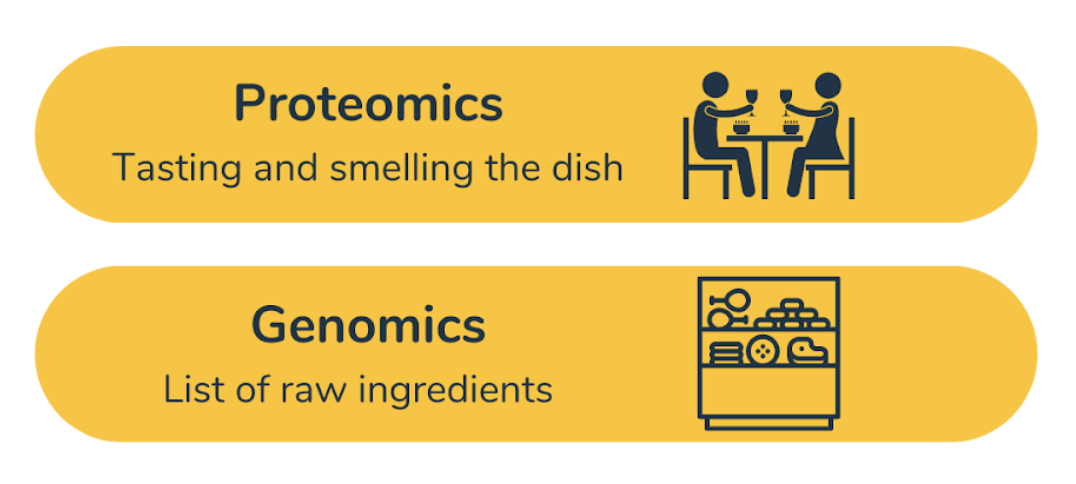My journey into Mass Spectrometry-based Proteomics.
I often describe myself as an engineer in a biologist's body. I grew up surrounded by a family of engineers and thinking about things in a very mechanical way rubbed off on me. My fondest memories of growing up are being in the garage and pulling things apart - and admittedly not necessarily putting them back together very well.
Throughout university, while I was classically trained in the broad sciences, I was always drawn to being hands-on in the lab - making, seeing and discovering things at the bench. I loved the chemistry training I received, and found that I was able to pick up biochemistry much more easily in comparison to the other sciences. This natural gravitation towards biochemistry meant I dove deep into the world of protein biochemistry, protein structure and amino acids. It was during this time that I became a little obsessed with these tiny building blocks of life - understanding how they behave and come together to form functional units, how they are essentially living machines in their own right. I was, and have since been, completely fascinated by them.
Further into my career I realised it made so much sense to bring together this love of biochemistry with my strong interest in technology . Here I found my calling, working at the interface of Mass Spectrometry (MS) and helping biologists from many different disciplines access this technology.
I still believe Mass Spectrometry-based Proteomics is (and will be for quite a while) one of the most exciting areas in biological research, the forefront, where truly amazing discoveries are possible.
We’re a long way off from the science fiction depiction of future medicine (like a tricorder in star-trek), but I don’t think I’d be exaggerating to state that this technology will be essential to advance our understanding of how life exists, to the point where we can accurately model and predict any possible biological outcome, a future where the word ‘disease’ could be lost to history.
MS-based Proteomics - the tools that fit perfectly at the intersection of technology and biology
The use of MS-based Proteomics (MSP) as a technique to address fundamental biological questions has been the major focus of my research career to date. My first introduction to the potential range of these range of techniques was in the early 2000s when I turned to MS to characterise some peptides I was using for a T-cell response study. The possibilities and flexibility of the technique, being able to make measurements of literally any molecular entity (as long as it could be ionised and carry charge) blew me away. I was hooked.
So what is MS-based Proteomics?
Mass Spectrometry itself is a century-old technology born in the field of physics and like many great scientific advances was developed out of a necessity to solve a problem. It’s inventor, J. J. Thomson was intent on measuring isotopes of Neon. Over the years that followed it slowly became the go to technique for isotope measurements and since that has evolved to the point today where, not only can we can accurately measure and quantify the isotopes of individual complex molecules, we can measure many thousands of these simultaneously, facilitating the post genomic -omic era (in biology - namely proteomics, metabolomics, lipidomics and glycomics). Today, MS is used in a huge array of industries as a discovery and analytic tool to measure known and unknown molecules of interest (think toxins in toxicology, products during drug processing, biomarkers from plasma/urine/tissue, the list goes on..)
Proteomics is the large-scale investigation of the structural and functional properties of proteins including the measurement of their abundance and state of chemical modification. The many measurable aspects of proteomics can be defined by:
- The complete collection of proteins present in any given cell and their abundance
- The subcellular location
- The 3 dimensional structure and flexibility (proteins range from being very rigid to floppy)
- Complex formation where multiple proteins come together to form larger structures
- sequence differences (many diseases and cancers can be driven by changes to key protein sequence changes)
- Transient interactions (proteins are known to bind other proteins, metabolites, lipids and sugars)
- Their enzymatic function (phosphorylation, ubiquitination, methylation - and the list goes on)
When describing Proteomics for the first time I often use the analogy used to describe it in relation to it's more well known cousin Genomics. Let’s say you were trying to tell the difference between two restaurants - a genetic sequencing approach is like reading the list of ingredients the restaurant uses. You can easily work out the calorie content, or how much sugar or fat there is, but you can tell how the ingredients come together to form the dish. Proteomics however, allows you to smell and taste the food - seeing what the combination of ingredients can do together.

It’s this ability to measure the outcome of all the events and interactions that are working in concert to coordinate life inside the cell. It allows us to literally see inside cells and understand the causative differences, changes and processes when comparing health to virtually any known disease.
Mass Spectrometry-based Proteomics (MSP) in particular is one of the most powerful scientific tools we have. As we’re measuring the protein molecules directly, we can see them misbehaving in action in the context of disease. MSP also allows measurement of proteins over time, giving us insights into the fundamental molecular mechanisms of disease. A great beginners’ guide to MSP can be found here.
Why is understanding the proteome so important?
MSP has played - and will continue to play - a growing and critical part in how we understand disease in the context of health. As students, we were generally taught that the primary basis of disease stems from our inherited genetics, and that a complete understanding of the genome will allow for disease to be truly understood. We now have a growing appreciation that it’s nowhere near that simple, genetics and its implied association with understanding disease - in its broader context - is really a misnomer. Using genetics as the lens in which we use to peer into the mechanisms of disease ignores the multitude of translational and post translational steps that happen to genes on their journey to becoming their respective functional endpoints - proteins. The magnitude of complexity explodes at this transition point, where genes become proteins.
Ultimately, it's how our collective proteome (the product of our genes) interact and respond to our environment. It's this dynamic interaction that causes disease, and this is what Proteomics enables us to measure.
Recent published articles give a strong signal that Proteomics is on the rise, defining Proteomics as a superpower. I couldn’t agree more- and I believe Proteomics is truly the last frontier in medical research.
If MSP is so important, why isn’t it being used more effectively by life scientists today?
While the barriers and challenges are a pretty huge topic, there are two major ones worth summarising. I’ll be dedicating a whole blog post to it - stay tuned for that.
What are they?
Processing and analysis bottlenecks and the dependence on multidisciplinary expertise.
Firstly, over the past decade, it has become increasingly apparent that there are significant bottlenecks to allowing the full capabilities of current MS technologies to permeate across all potential industries and niches. Chief among these bottlenecks is the ability to reliably and accurately process and analyse the results from these instruments. This has for too long remained in the hands of the domain expert, under the claims that only MS experts can interpret its data appropriately. The advent of advanced algorithms, scalable cloud-based computing, standardisation of statistical methods (in particular moving toward more objective outcomes in statistics analysis) are set to change all this.
Secondly, MSP can be done in a lot of different ways, and there’s lots of breadth to the technology. By nature, it is a very multidisciplinary approach and multiple facets of science are needed to understand it well - biologists, analytical chemists, statisticians, electrical engineers, computational biologists, to name only a few.
It’s my dream to create the tools and approaches that will enable us to break down these barriers and enable many more life scientists to access this incredible technology.
---
Thanks for reading this series of blog posts written by Andrew Webb - Chief Scientific Officer and co-founder of Mass Dynamics. In addition to his role at Mass Dynamics, Andrew is an Associate Professor at the Walter and Eliza Hall Institute and co-founder and inventor at IonOpticks. Across each of these dynamic positions, he is on the coalface of leading science in both industry and academia. We’re thrilled that in this series of blog posts, Andrew shares with us how he discovered Mass Spectrometry, what he sees as the biggest challenges and opportunities, what the broader MS community is doing to drive impactful outcomes, who is reaping the benefits of MS and where he sees the future of analytical science heading.

